Eye Protection Selector
Choose Your Conditions
Recommended Eye Protection
Quick Summary
- Identify the main irritants-pollen, smoke, dry air, wind-and how they trigger eye redness.
- Adopt daily habits like staying hydrated, using a humidifier, and limiting screen glare.
- Choose the right protective eyewear (UV‑blocking sunglasses or wraparound goggles) for your environment.
- Use over‑the‑counter eye drops wisely; know when prescription drops are needed.
- Seek professional care if redness persists for more than 48 hours or comes with pain or vision changes.
When you notice a burning or bloodshot look, eye redness caused by environmental irritants is a common reaction where tiny blood vessels on the surface of the eye expand due to particles like pollen, smoke, or dry air can be both uncomfortable and a sign that your eyes need protection. In today’s world, pollutants, seasonal allergens, and even indoor heating systems constantly challenge the delicate surface of our eyes. This guide walks you through practical steps to protect your eyes from those aggravators, so you can keep the whites clear and the feeling comfortable.
Understanding Why Irritants Trigger Redness
The eye is a transparent organ that focuses light and safeguards the brain is lined with a thin membrane called the conjunctiva. When airborne particles land on this membrane, the body releases histamine and other chemicals, causing the tiny blood vessels-known as redness dilation of conjunctival vessels (hyperemia) to widen. This increased blood flow creates the classic “red eye” look and can also produce itching, tearing, or a gritty sensation.
Common Environmental Irritants
Not all irritants are created equal, but most fall into a few familiar categories:
- Pollen microscopic grains released by trees, grasses, and weeds during spring and summer - a major trigger for allergic conjunctivitis.
- Smoke combustion particles from cigarettes, wildfires, or cooking - contains chemicals that irritate the ocular surface.
- Dry air and wind - especially from indoor heating or air‑conditioning, which evaporates the tear film.
- Chlorine in swimming pools - a disinfectant that can strip natural oils from the eye.
- Chemical fumes from cleaning products or solvents.
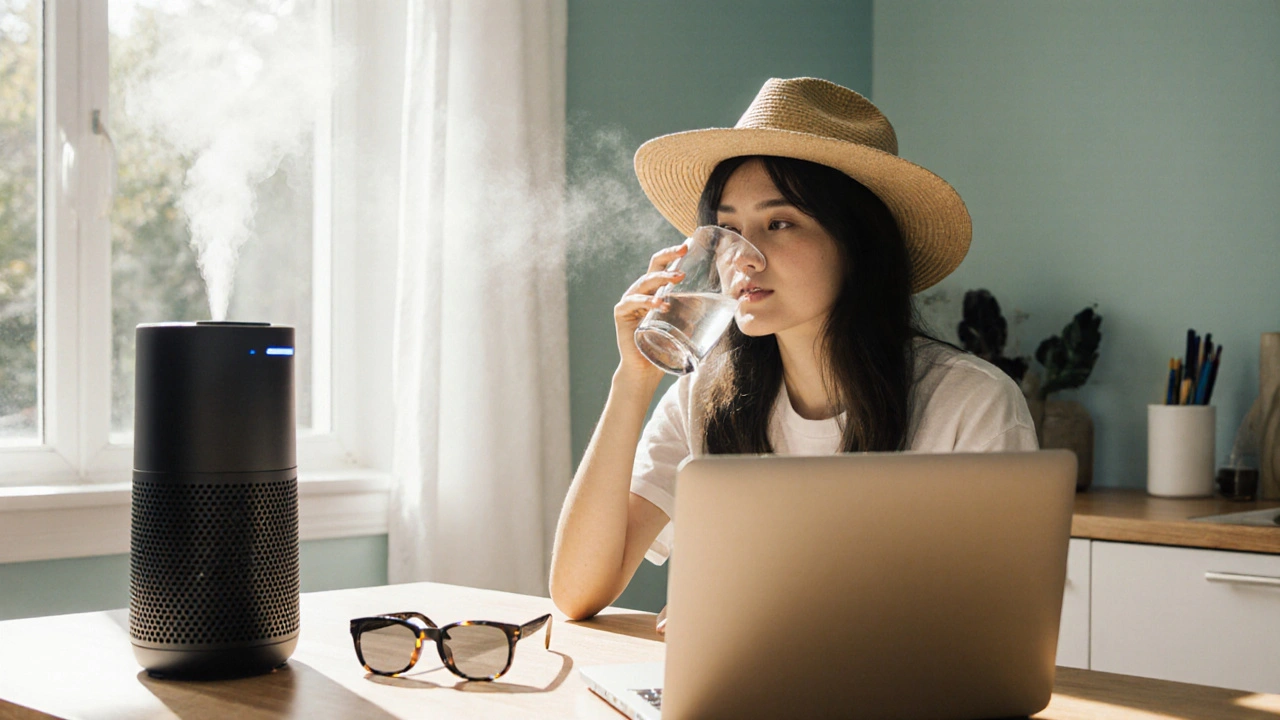
Everyday Habits to Reduce Exposure
- Stay hydrated. Drinking at least 8 cups of water daily helps maintain a healthy tear film.
- Use a humidifier a device that adds moisture to indoor air, reducing tear evaporation during winter months or in dry climates.
- Monitor pollen counts via local weather apps; keep windows closed on high‑pollen days and run an air purifier with a HEPA filter.
- Change HVAC filters every 3‑4 months to trap dust and smoke particles.
- Limit screen time or apply a blue‑light filter to reduce eye strain, which can worsen redness.
- Wear a wide‑brim hat outdoors to shield eyes from wind and dust.
Protective Gear and Home Adjustments
When you can't avoid the elements, start with protective eyewear glasses or goggles designed to block particles, UV rays, and wind. Choose lenses with an anti‑reflective coating to prevent glare, and look for frames that seal gently around the eye without pressing on the eyelids.
| Type | UV Protection | Ventilation | Best For |
|---|---|---|---|
| Sunglasses (polarized) | Yes (99%) | Low (can trap heat) | General outdoor use, bright sunlight |
| Wraparound sunglasses | Yes (99%) | Medium | Pollen, wind, low‑speed sports |
| Sports goggles | Yes (99%) | High (vented lenses) | High‑speed activities, water sports |
| Prescription safety glasses | Yes (99%) | Variable | Those needing vision correction |
For indoor environments with poor air quality, an air purifier equipped with a HEPA filter can capture 99.97% of particles as small as 0.3µm, dramatically cutting down on irritants that reach your eyes.
Eye Drops and Medical Options
Over‑the‑counter lubricating drops-often labeled as artificial tears-replenish the tear film and wash out minor particles. When allergies dominate, antihistamine eye drops contain medication that blocks histamine receptors on the eye surface can reduce itching and redness within minutes.
For chronic or severe cases, prescription drops like cyclosporine (Restasis) or lifitegrast (Xiidra) boost tear production and reduce inflammation. Always consult an eye‑care professional before starting prescription therapy.
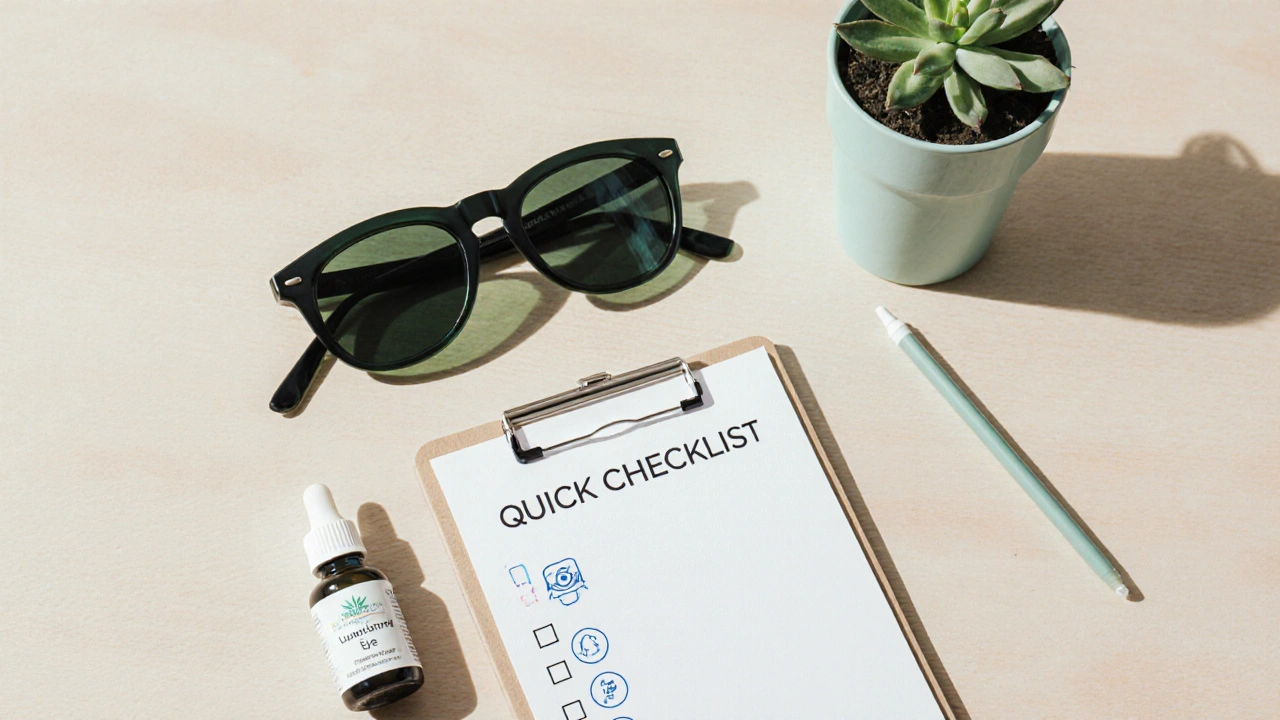
When to Seek Professional Help
If redness lasts longer than 48 hours, is accompanied by pain, light sensitivity, blurry vision, or a discharge that is thick or green/yellow, schedule an appointment. These signs can indicate infections (conjunctivitis), foreign bodies, or more serious conditions like uveitis that need targeted treatment.
Quick Checklist
- Know your local pollen and air‑quality levels.
- Keep a humidifier running in dry rooms.
- Carry lubricating eye drops for on‑the‑go relief.
- Wear UV‑protective, wraparound eyewear when outside.
- Replace HVAC and air‑purifier filters regularly.
- Visit an eye doctor if symptoms persist or worsen.
Frequently Asked Questions
Can I use regular contact lenses when my eyes are red?
If redness is due to irritation, it’s best to remove contacts, clean them thoroughly, and give your eyes a break. Continuing to wear them can trap irritants and worsen inflammation.
Are there any foods that help reduce eye redness?
Omega‑3 fatty acids (found in salmon, walnuts, and flaxseed) support tear production, while vitamins A and C help maintain healthy ocular surface cells. Adding these to your diet may lessen dryness‑related redness.
How often should I replace my humidifier water?
Change the water daily and clean the unit weekly to prevent mold growth, which could introduce new irritants.
Is it safe to wear sunglasses indoors?
Indoors, sunglasses can reduce visual clarity and cause eye strain. Instead, opt for indoor‑specific anti‑glare glasses if you need screen protection.
What’s the difference between artificial tears and lubricating gels?
Artificial tears are watery drops that provide quick, short‑term relief, while lubricating gels are thicker, stay longer on the eye, and are better for severe dryness, often used at night.
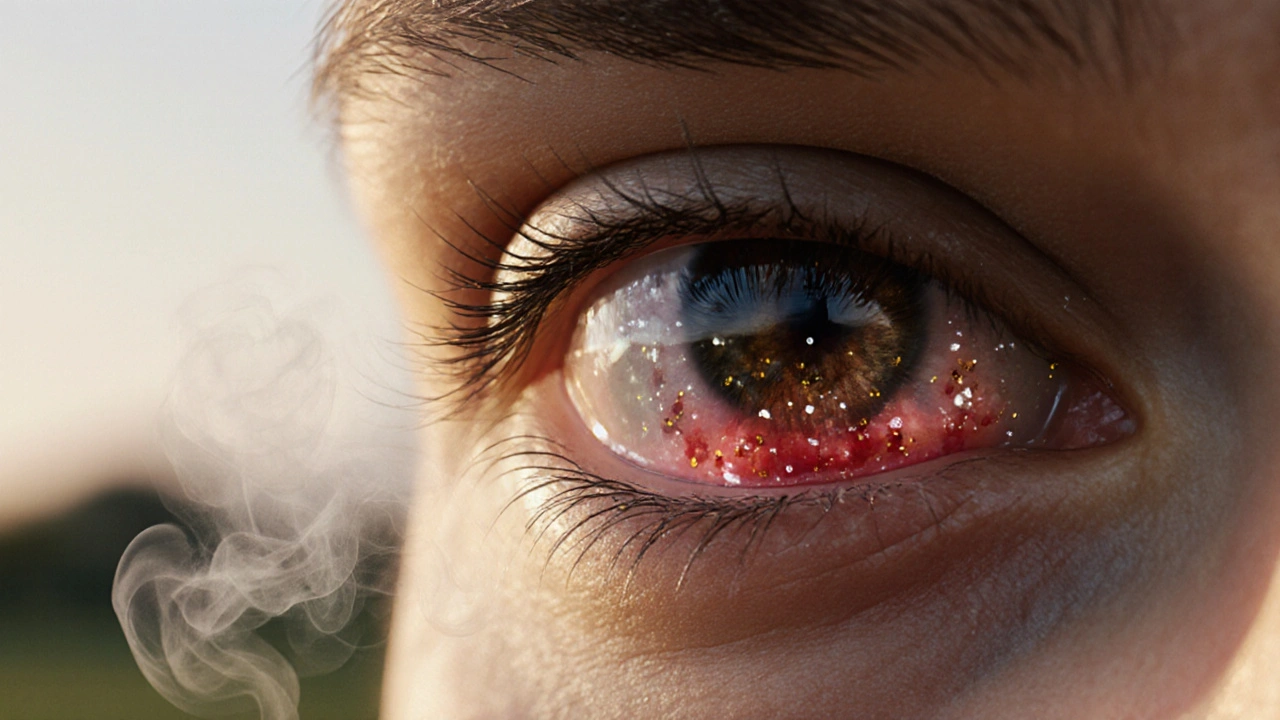
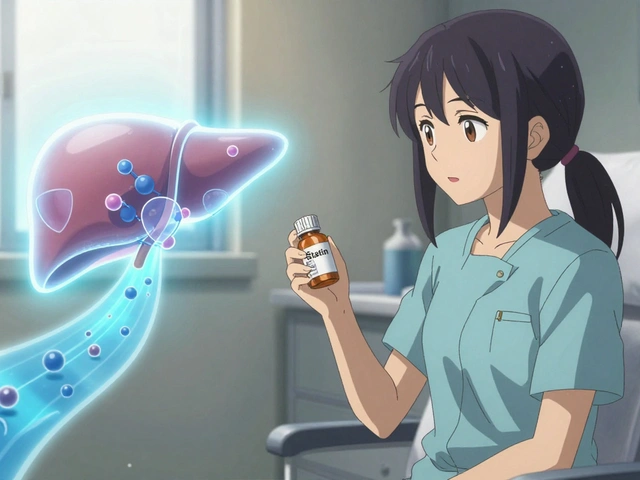
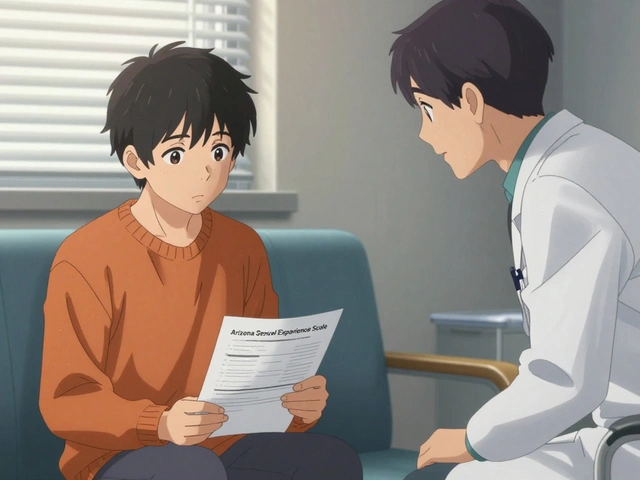

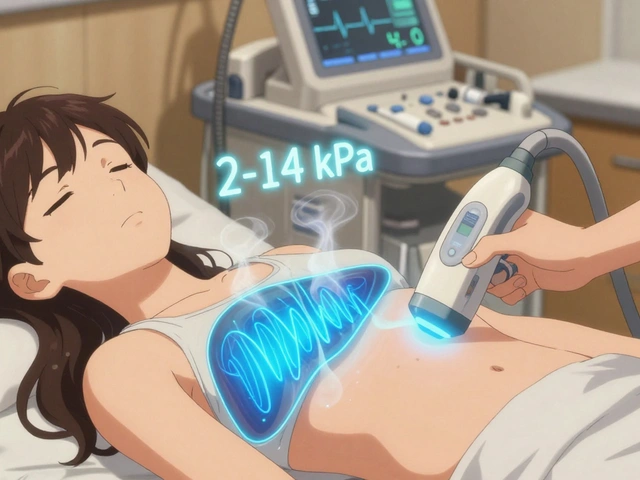

14 Comments
Lila Tyas
October 12, 2025Hey folks, keep a water bottle handy and sip often – staying hydrated is the simplest way to keep those eyes fresh!
Mark Szwarc
October 17, 2025That's right, Lila. In addition, consider using a humidifier in rooms with forced-air heating; the added moisture helps maintain the tear film and reduces conjunctival redness.
BLAKE LUND
October 22, 2025Yo, if you’re battling pollen‑induced glare, grab a pair of wraparound shades with a snazzy anti‑reflective coating – they block the particles and keep your peepers from feeling like sandpaper. 🌾
Veronica Rodriguez
October 26, 2025Good tip, Blake! Adding a pinch of moisturizer to the eye drops (the preservative‑free kind) can give that extra splash of relief 😊.
Holly Hayes
October 31, 2025Umm… honestly, I think most ppl just ignore the dry‑air thing and end up with red eyez. It's like, duh, use a humidifier lol.
Matthew Shapiro
November 5, 2025Holly, just a quick note – “ppl” is “people” and “eyez” should be “eyes.” A little polish can make the advice clearer for everyone.
Julia Phillips
November 9, 2025When it comes to battling eye redness, the first line of defense is awareness of what is actually irritating your eyes.
Most people think only pollen triggers allergies, but smoke, dry indoor air, and even chlorine can wreak havoc on the delicate conjunctival vessels.
Your tear film is like a thin windshield wiper; it needs a balanced mix of water, oils, and mucus to stay smooth.
If any component evaporates too fast-say, because your heater is blasting hot air-the surface becomes dry and blood vessels dilate, creating that dreaded bloodshot look.
Staying hydrated isn’t just a wellness cliché; drinking enough water directly contributes to tear production.
A humidifier set to about 45% relative humidity can dramatically reduce evaporative loss, especially in winter.
When you’re outdoors, a wide‑brim hat combined with wraparound sunglasses forms a physical barrier against wind‑borne particles.
Look for lenses with a 99% UV filter and an anti‑reflective coating to minimize glare that can strain the eyes further.
If you have a prescription, don’t sacrifice protection; prescription safety glasses with the same UV coating are widely available.
For water activities, sports goggles with a sealed seal prevent chlorine from leaching into the eye surface.
Remember to rinse your goggles with fresh water after each swim to avoid residue buildup.
If allergies are your main culprit, over‑the‑counter antihistamine drops can calm histamine release within minutes.
For chronic dry‑eye, preservative‑free artificial tears used four to six times a day keep the film stable.
Never share eye drops with anyone, as this can spread infections.
If redness persists beyond 48 hours, or you notice pain, light sensitivity, or vision changes, it’s time to see an eye‑care professional.
Early intervention can prevent simple irritation from evolving into something more serious like uveitis or corneal ulcer.
Richa Punyani
November 14, 2025Indeed, Julia, such a comprehensive approach not only safeguards ocular health but also cultivates a disciplined routine-well advised!
Bhupendra Darji
November 19, 2025Adding a simple air‑filter to your bedroom can snag a lot of the fine dust before it even reaches your eyes; think of it as a silent guard.
Robert Keter
November 23, 2025First off, let’s acknowledge that the eyes are among the most delicate sensory organs we possess, constantly exposed to a barrage of environmental stressors that most of us simply ignore.
From the microscopic pollen grains that infiltrate indoor air to the invisible volatile organic compounds emitted by cleaning agents, each irritant poses a unique challenge to the ocular surface.
When the tear film destabilizes, the underlying conjunctival blood vessels dilate, manifesting as that unmistakable redness we all dread.
Hydration, both internal through water intake and external via humidifiers, serves as the cornerstone of a resilient tear film.
Simultaneously, shielding the eyes with UV‑blocking, anti‑glare lenses creates a physical barrier that mitigates both particulate ingress and harmful solar radiation.
For those who wear contacts, it’s critical to adhere to a strict cleaning regimen; residual deposits act as a breeding ground for microbes, exacerbating inflammation.
Meanwhile, lubricating eye drops, especially preservative‑free formulations, replenish the aqueous layer and provide rapid soothing relief.
Finally, if any symptom persists beyond the 48‑hour window, escalates in severity, or is accompanied by pain or visual disturbances, seeking professional ophthalmic evaluation becomes non‑negotiable.
In short, a proactive, layered defense strategy can transform a vulnerable pair of eyes into a well‑guarded fortress against redness.
Rory Martin
November 28, 2025One might wonder whether the “air‑quality” data we receive is truly impartial, or whether hidden entities prefer us to keep our eyes reddened, distracted, and compliant; a thought worth pondering.
Maddie Wagner
December 2, 2025Remember, protecting your eyes isn’t just about the gear – it’s also about giving them regular breaks from screens and practicing the 20‑20‑20 rule.
Boston Farm to School
December 7, 2025Yeah taking breaks helps a lot also blink often keep tears balanced
Karen Ballard
December 12, 2025Love the tips! 😊 Keep those peepers safe and stay bright! 😎✨